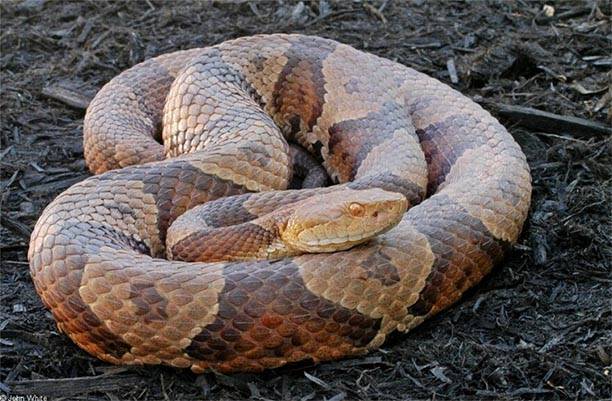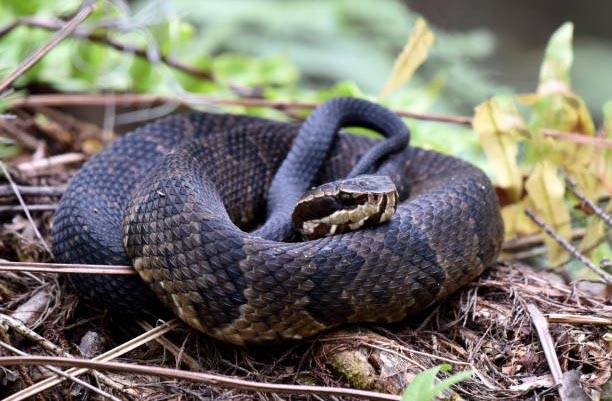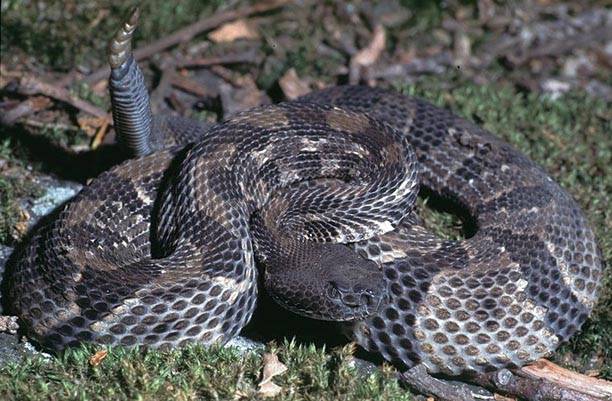As the weather gets warmer and the flowers start to bloom, the snakes also come out of winter shelters to warm themselves in the sun and hunt rodents. In Virginia, most of the snakes we encounter are relatively harmless, but even a non-venomous snake bite can be troublesome. What should you do if your dog is bitten by a snake?
Stay Away
Most snakes prefer to hide and stay out of sight. In your yard, you can discourage snake activity in a few ways:
– Keep your lawn mown and mow it as short as you can. Long grass not only gives snakes a safe place to hide, but rodents also use long grass as a cover, giving snakes a reason to come into your yard to hunt.
– Avoid items in your yard that can harbor a hiding snake. Snakes will hide in hose boxes, under toys, in wood piles, and other items that are close to the ground. Try to keep your yard clear of clutter on the ground.
– Snakes avoid most hard or rough surfaces. Rocks and mulch can be a useful way to discourage snakes from hiding under bushes and landscaping.
When you are hiking, stay on the trail and keep your dog on a leash. Dogs are more likely to be bitten when they wander into long grass, weeds, and shaded areas off the path, so keeping your dog on the trail will help you both to avoid encountering snakes. Snakes can also feel vibrations in the ground and will avoid areas where they feel heavy footfalls, so stomp your feet every now and again to warn snakes that you are coming that they should move away.
Know Your Enemy
If your dog is bitten by a snake, it is invaluable to identify the snake. If the snake was venomous, knowing what kind of snake bit your dog can be a vital key to getting your dog the best help possible. In Virginia, most of the snakes we encounter are non-venomous and pose very little threat to dogs or humans. The exceptions include the Timber Rattlesnake, the Northern Copperhead, and the Eastern Cottonmouth. If you can identify these snakes, you can help your veterinarian to administer the right antivenom and treatment to save your dog’s life. The photos below may help you identify these snakes:

Northern Copperhead

Eastern Cottonmouth

Timber Rattlesnake
If your dog has been bitten by a venomous snake, call your veterinarian immediately. Rinse the wound with water and try to keep the wound below the heart to minimize the circulation of the venom. Your vet may guide you through CPR or other emergency treatment, but the single most important thing you can do after a venomous bite is to get your pet to a veterinarian as soon as possible.
If you aren’t sure that the snake that bit your dog is poisonous or if you aren’t sure that your dog was bitten by a snake, watch for these symptoms:
- Bite marks. Usually, there are two puncture wounds that look like a bite, often on the face, neck, or legs.
- Swelling and bruising around the bite.
- Sudden weakness or collapse
- Tenderness and aggression in response to pain when the wound is touched.
- Bleeding from the bite.
- Unsteadiness or dizziness.
- Bloody urine.
- Diarrhea
- Vomiting
- Drooling or excessive salivations
- Dilated pupils
If you see any of these signs, contact your veterinarian immediately.
Even if our dog was bitten by a non-venomous snake, you should contact your veterinarian. They will advise you about cleaning the wound and what signs you need to monitor in order to prevent infection and, if necessary, they can administer antihistamines or antibiotics.

